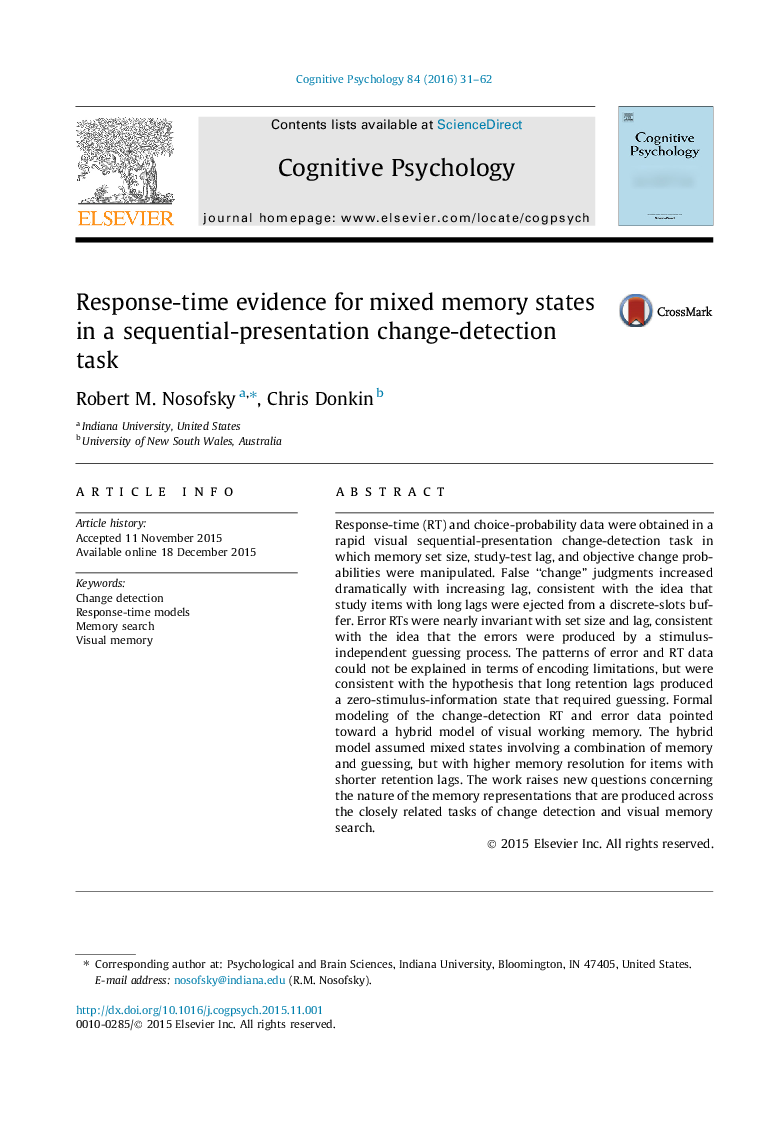| Article ID | Journal | Published Year | Pages | File Type |
|---|---|---|---|---|
| 916818 | Cognitive Psychology | 2016 | 32 Pages |
•Subjects were tested in a sequential-presentation change-detection task.•False-change judgments increased dramatically with study-test lag.•Error response-times were nearly invariant with lag and memory set size.•Modeling analyses pointed to a hybrid model with mixed memory states.•Memory-storage probability and resolution both decreased with lag.
Response-time (RT) and choice-probability data were obtained in a rapid visual sequential-presentation change-detection task in which memory set size, study-test lag, and objective change probabilities were manipulated. False “change” judgments increased dramatically with increasing lag, consistent with the idea that study items with long lags were ejected from a discrete-slots buffer. Error RTs were nearly invariant with set size and lag, consistent with the idea that the errors were produced by a stimulus-independent guessing process. The patterns of error and RT data could not be explained in terms of encoding limitations, but were consistent with the hypothesis that long retention lags produced a zero-stimulus-information state that required guessing. Formal modeling of the change-detection RT and error data pointed toward a hybrid model of visual working memory. The hybrid model assumed mixed states involving a combination of memory and guessing, but with higher memory resolution for items with shorter retention lags. The work raises new questions concerning the nature of the memory representations that are produced across the closely related tasks of change detection and visual memory search.
